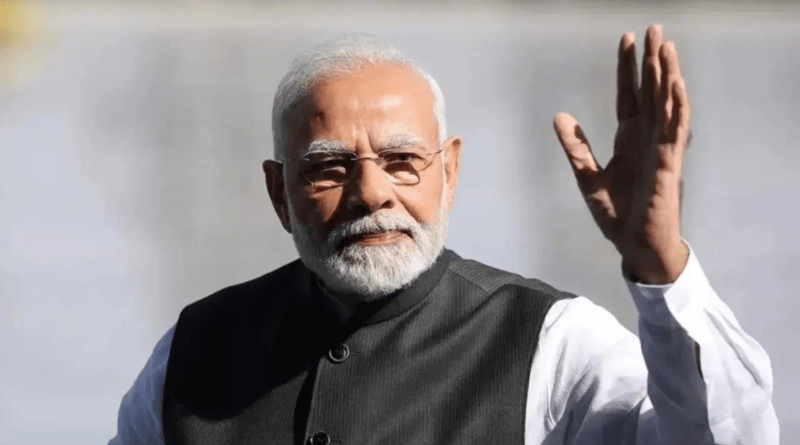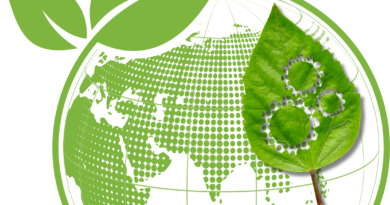Breakthrough: India’s Wondrous Journey In The Last Decade
The Indian government released a white paper on the country’s economy on February 8, 2024. It exposed the weaknesses of the Modi government’s legacy and demonstrated how much work, tenacity, and scheming through turbulent times were required to get India to its current position. However, the extent to which India has changed over the past ten years was widely known even before the report was released.
Up until 2014, India was living in a dark era.
Who can forget that India was included in Morgan Stanley’s 2013 list of the world’s “Fragile Five” economies? Who can forget that the Indian Army’s air defence systems were almost 97% obsolete in 2012? As of 2004, the Indian Air Force has not purchased a single major offensive weapon system. This is particularly concerning as China and Pakistan, its de facto vassal state, have been rapidly modernising their armed forces at the same time.
Terrorist attacks were more common than unusual in large urban areas. Back then, the word “retaliation” against Pakistan for its involvement in these attacks was practically unheard of in the Ministry of Defence’s hallways. Thus, the military was hindered not only by an antiquated arsenal but also by a hesitant and vacuous political leadership that was eschewing audacious choices.
In the meantime, over 50% of the population in India did not yet have access to formal banking, and only 15 paisas went to the final beneficiary for every rupee. Additionally, no significant structural reforms spearheaded by the Centre were implemented in India during that decade. Most of the time, it was occupied with putting out fires to protect its leaders from grave accusations of embezzlement and crony capitalism.
Prime Minister Narendra Modi took over this in 2014, along with a banking system on the verge of collapse, a foreign policy bereft of direction, and a nation desperate to break free from colonial legacy.
SAGA OF THE METAMORPHOSIS, STARTING IN MAY 2014
2014 was a turning point in Indian history because, for the first time ever, the country of independent India was going to have a leader who would encourage an entire generation to dream big, to come to India, and to proudly embrace Indian culture. The white paper might have been released by the Modi administration as early as 2014. That would have spared them a great deal of criticism. However, it would have severely damaged the trust and integrity of investors in the sovereign.
PM Modi realised that it would take time to turn India around, so the Modi government set out on an arduous mission. Beginning in 2015, the messes left by the previous administration started to show, particularly in the banking sector. Not surprisingly, the most outspoken critics of the Modi government were the ones who left the mess behind. According to Professor Madhav Nalapat, the initial years of the Modi administration were devoted to clearing away the remnants of the previous administration. After that, the real work began.
GIVING THE DEPRIVED POWER
These kinds of programmes, which for the preceding sixty years had not been deemed significant enough, were the foundation of Team Modi. With the help of the Jan Dhan Yojana, Mudra Yojana, and Swachh Bharat Abhiyaan, Prime Minister Modi made sure that nearly half of India’s population, who had previously had no access to finance, formal banking, or sanitary conditions, now had all three.
A staggering 12 crore toilets were constructed, 50 crore bank accounts were opened, and 43 crore loans totaling Rs 22.5 lakh crore were disbursed. Almost all Indian families now have a formal bank account, open defecation has mostly been eliminated, and in the past nine years, formal capital access—something that the middle and lower middle classes consistently lacked while having innovative ideas—has been provided.
Reforming the Military at a Frantic Pace
In the meantime, there was a significant military modernization drive by the Modi administration. After being denied modernization for years, the Armed Forces witnessed the realisation of important contracts for assault rifles, bulletproof jackets, M-777 and K9-Vajra howitzers, S-400 air defence systems, combat jets like Rafale, transport planes like C-295, and more. This included the purchase of Apache combat helicopters and Chinook tactical transport helicopters.
Important structural changes
Along with these significant structural changes, the Modi administration also introduced the Fugitive Economic Offenders Act, the Insolvency and Bankruptcy Code Act, and the GST, to mention a few. PM Modi was aware that there would be initial difficulties with structural reforms and that results would take time to show. Despite the difficulties presented by political politics, he was prepared to take the risk.
Improve India’s resilience during the pandemic phase.
During the once-in-a-century COVID epidemic, the Modi government demonstrated amazing tenacity in capitalising on India’s industrial-scale proficiency, even though many had written off India’s tale. More than 200 crores of vaccinations produced in India were given to eligible Indians at no cost.
Results of Painted Reforms
India’s economy grew from being the fifth largest in the world in September 2022 to the third largest in the coming years, with a target of surpassing the $7 trillion mark by 2030, thanks to a number of meticulous and important policy efforts. India’s transformation over the past ten years—from the “Fragile Five” to the “Major Five”—has been made possible by PM Modi’s leadership, which promised a phoenix-like comeback for the country. The period of jobless growth is over.




